  |
Macintosh System Troubleshooting, Service, Repair and Consulting Making Macs work since 1984 |
Networking and server solution case study
Digital video (DVI) and the Macintosh
Bone Yard: Old parts and components
Moving on up...A mid-sized design firm was finally moving from their old office space into a new space built to suit them. This was an excellent opportunity to install a network which will serve them without upgrade for the next 10–20 years. |
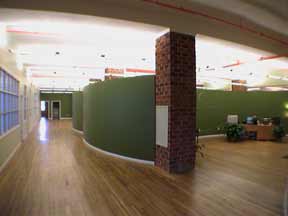 |
The network solutionInstallation costs are the biggest part of network expense. Since all new Macintosh have been shipping with gigabit ethernet cards, it makes sense to build a local area network for these speeds now. For this reason, we recommended spending more on materials, using cabling with capabilities in excess of their current need. See here is the network rack. |
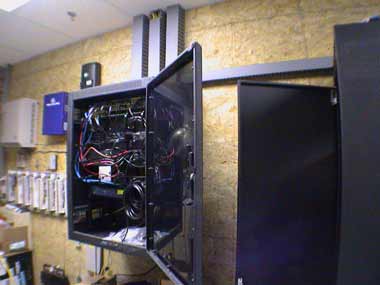 |
The network rack houses all network related components. At the top is a patchbay. Belkin MediaTwist and CAT 7-proposal rated Panduit jacks assure the LAN can exceed gigabit ethernet speeds. A managed switch from Asante was chosen for its gigabit uplink capability, so that when faster switches become affordable it's backplane can talk at full-speed with the new gear. All cables are color-coded: black for 10/100BT, red for crossover, blue for LocalTalk. |
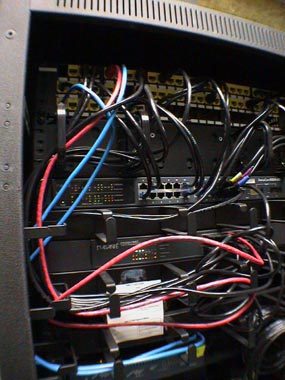 |
The server solutionThe server rack houses the file and mail, DNS, and backup servers. It can easily accomodate 3 more servers in the future. Both racks are key-locked to ensure against tampering, and the wiring closet is alarmed and kept locked. |
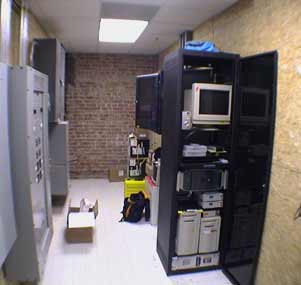 |
Color-coding is used for all server identification, allowing a non-technical user to be guided to perform complicated tasks over the telephone. This offers greater speed in resolving technical problems and lower maintenance costs. All servers share the same monitor and keyboard. The KVM switch used to change between them is color-coded for each server. Each server's desktop displayed on the monitor shares the color-coding. Seen here, the blue file server is selected and the background on the monitor is blue. The other servers are identified by orange and yellow. |
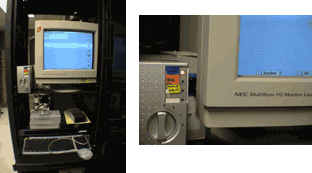 |
The same color-coding is also applied to labels on each server, peripherals, and all cables. This makes it simple for the non-technical person to easily identify associated hardware for each server. Seen here: the front of blue server and it's two external hard drives, the back of it with attached cables, and it's power cable attached to a software and phone touchtone controlled power strip. |
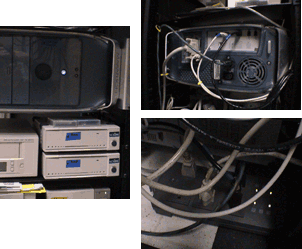 |

 happymac
@ metamedia.us | (865) 584-3355
happymac
@ metamedia.us | (865) 584-3355
Products and trademarks referenced on
this site belong to their respective owners.
©1995-2002
Metamedia | All Rights Reserved
| Updated
September 26, 2002
